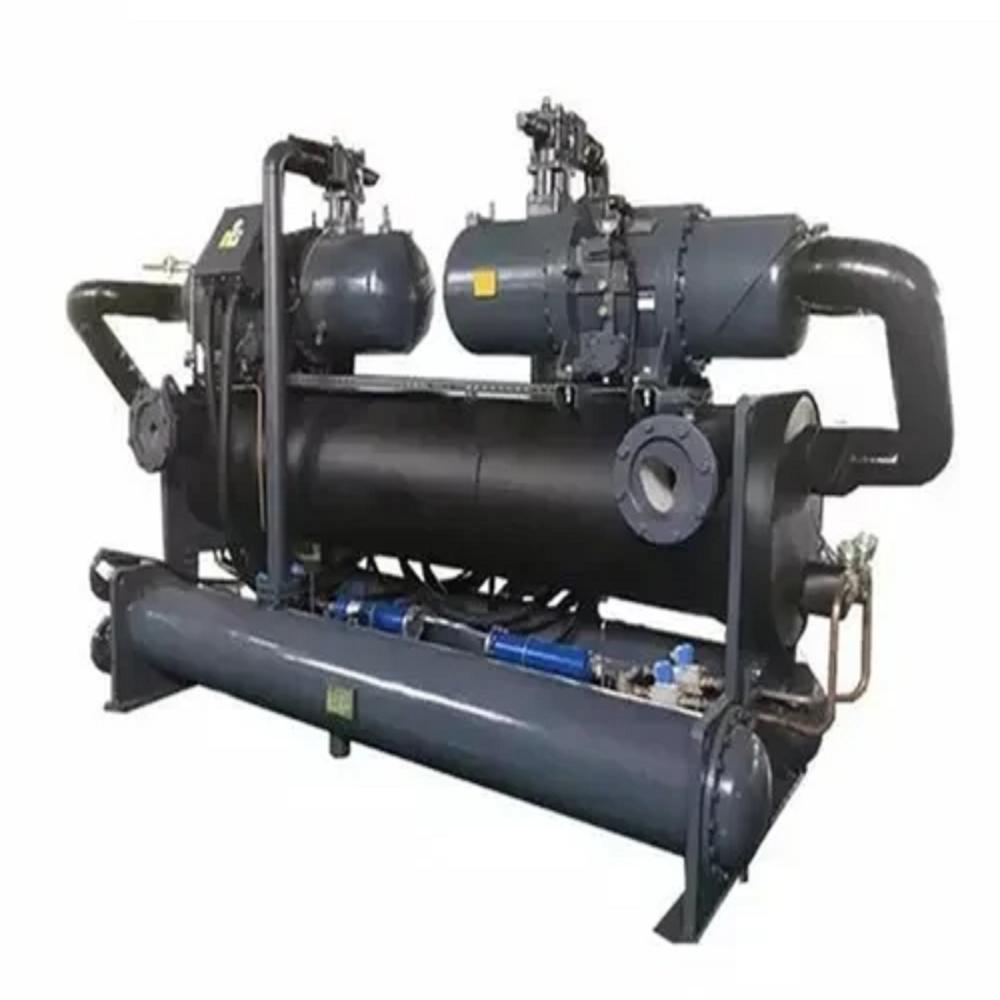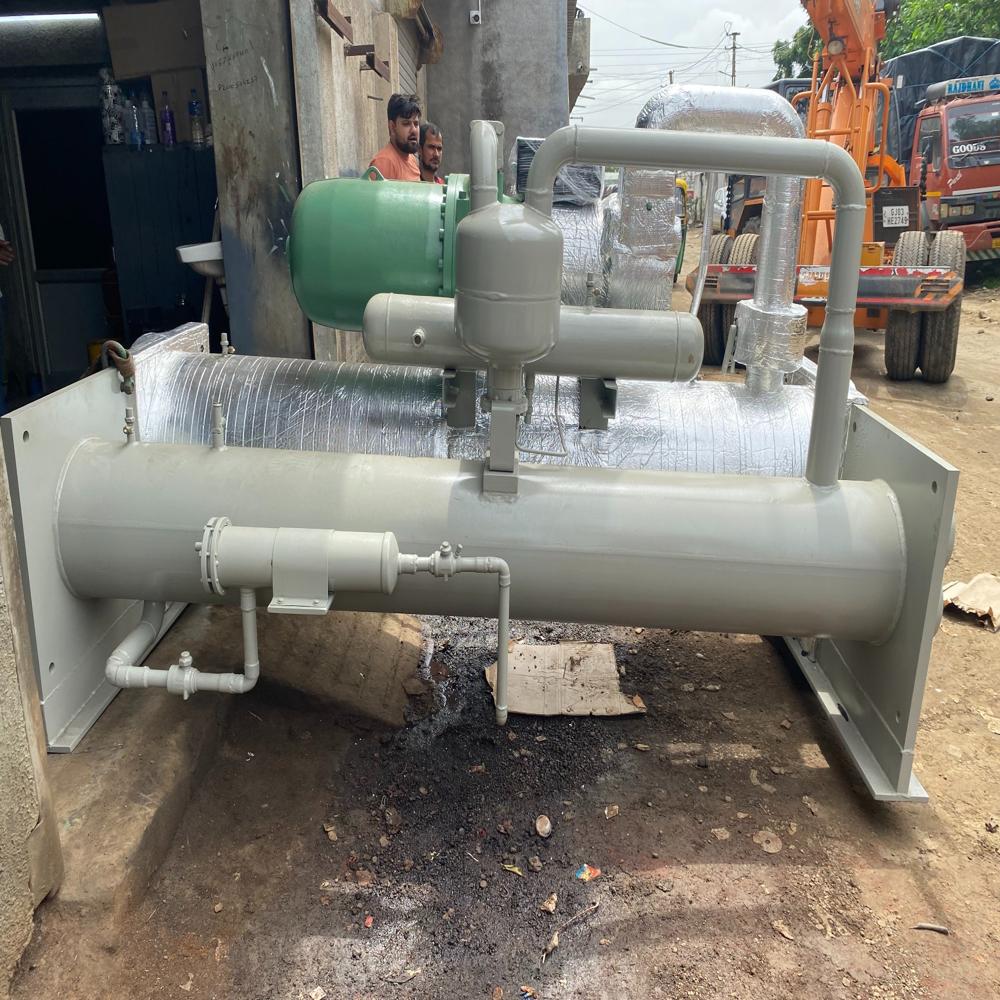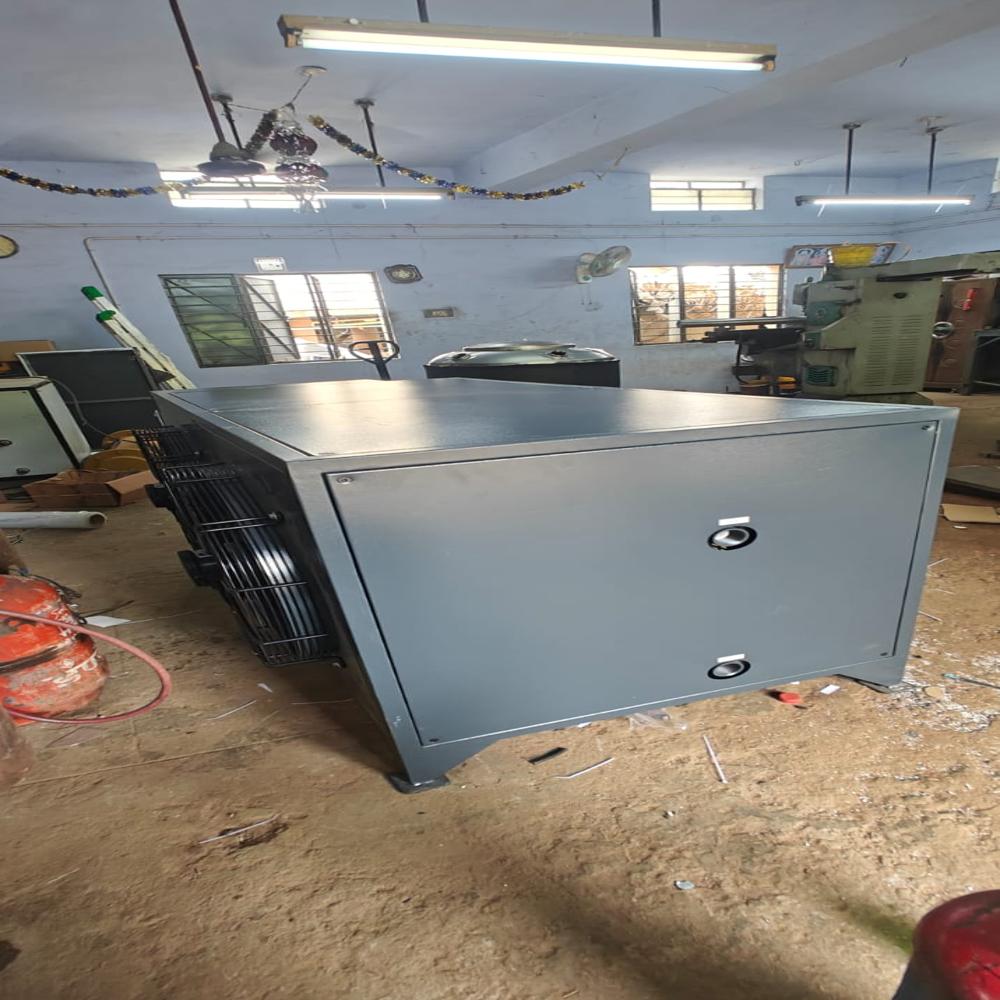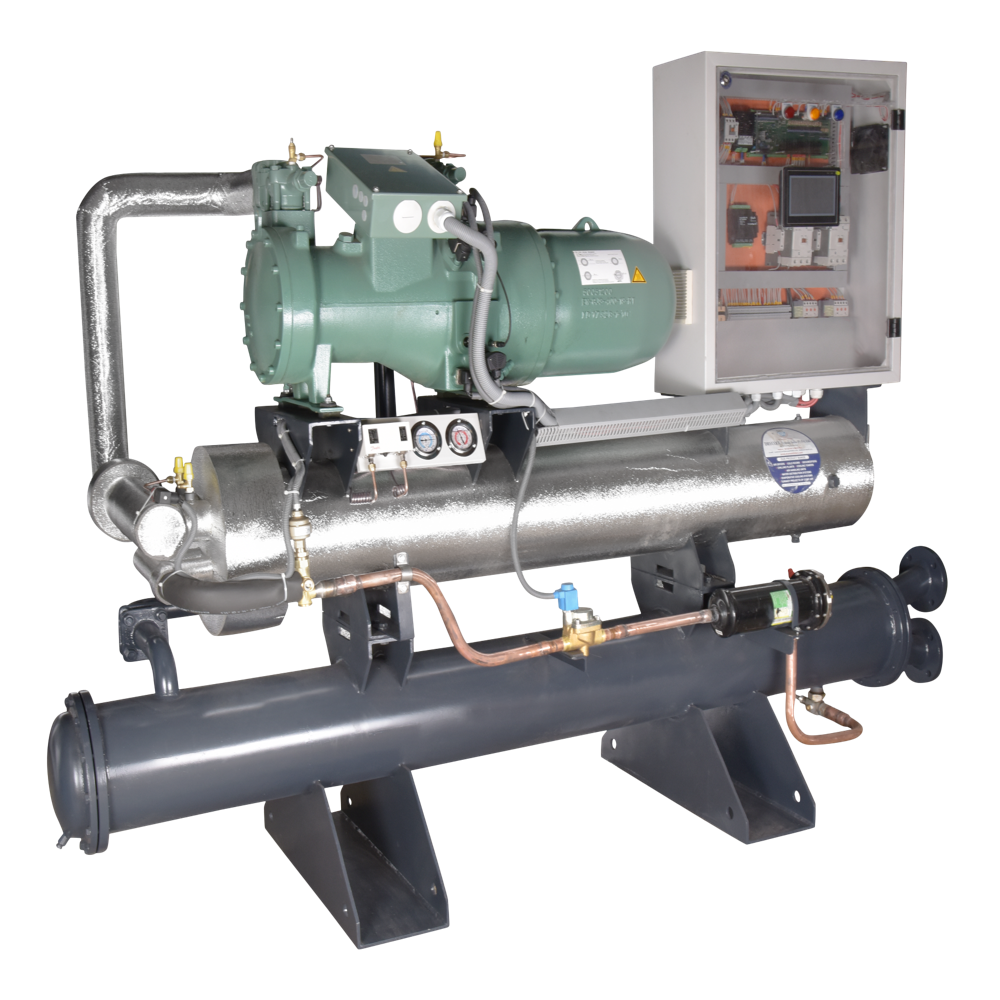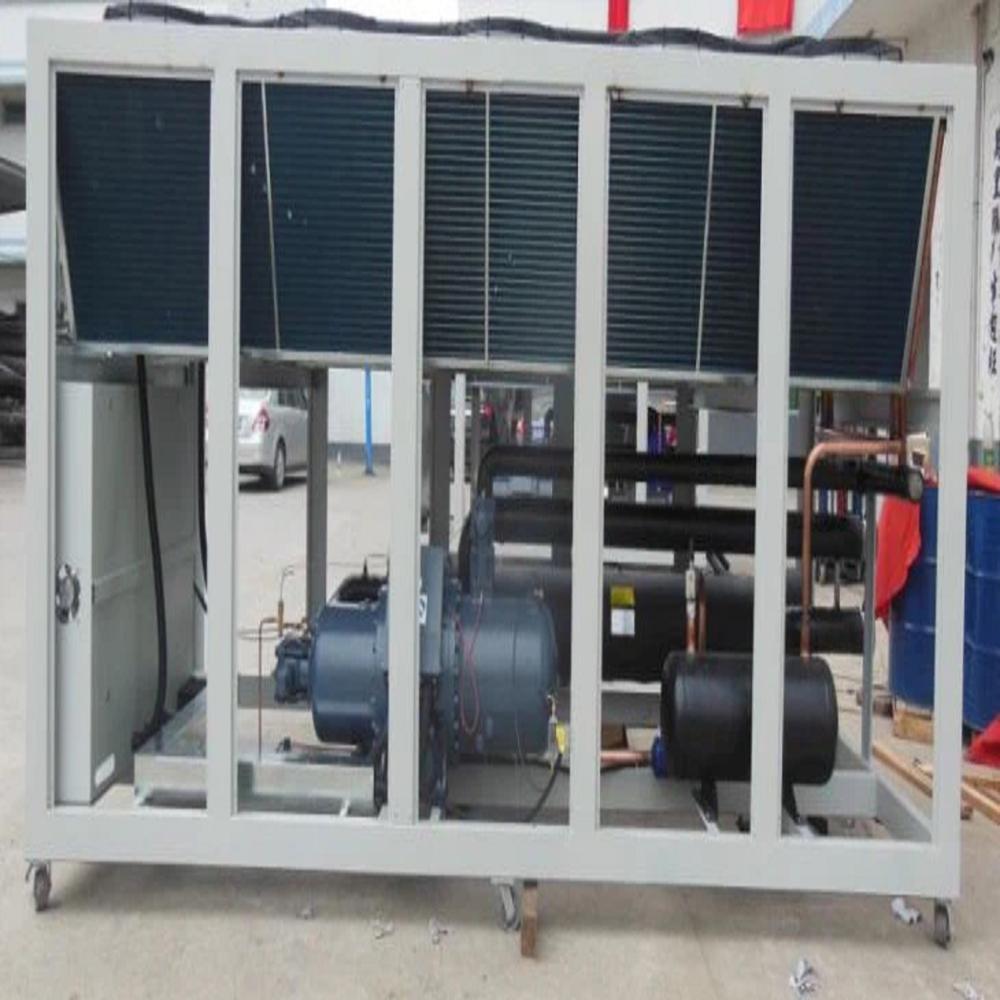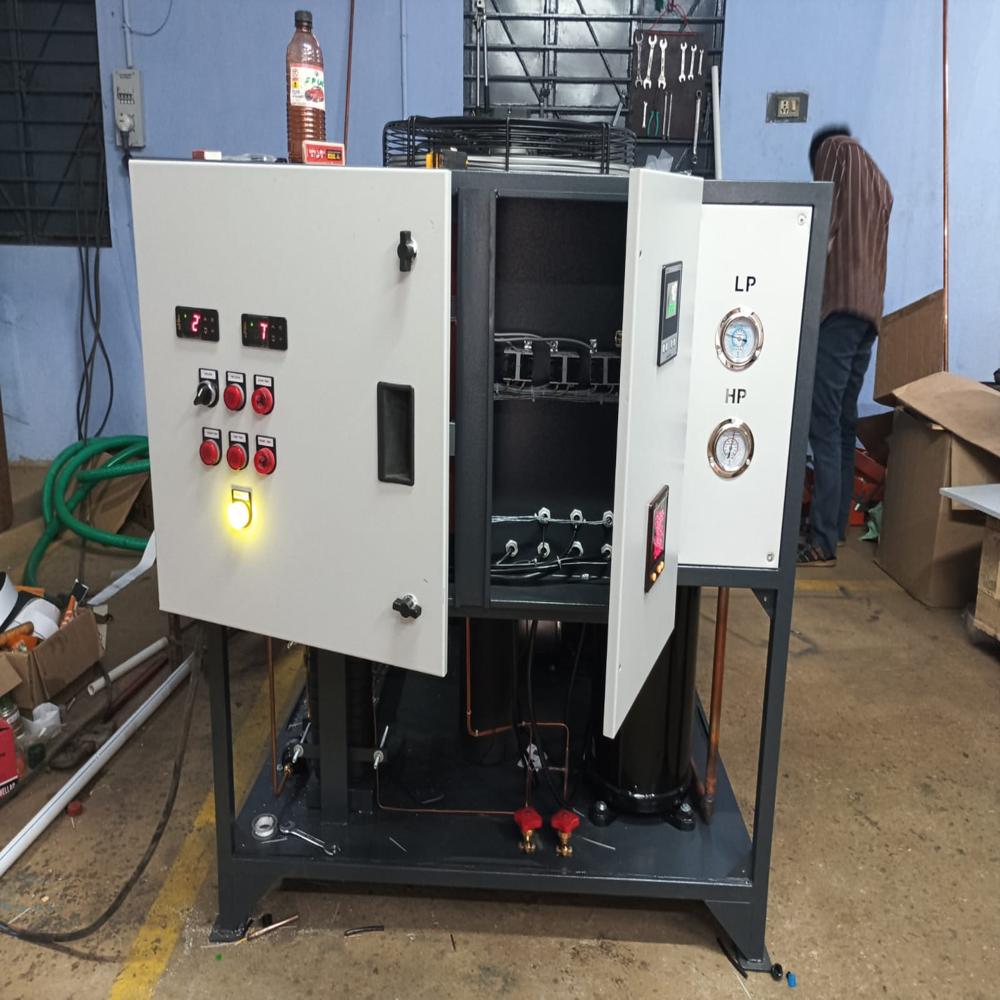55TR WATER COOLED WATER CHILLER
1054000.0 INR/Number
Product Details:
- Product Type WATER COOLED
- Water Flowing Rate 499LPM
- Length 2200 Millimeter (mm)
- Application INDUSTRIAL
- Color GREY,WHITE
- Weight 1500 Kilograms (kg)
- Height 1500 Millimeter (mm)
- Click to View more
X
55TR WATER COOLED WATER CHILLER Price And Quantity
- 1 Number
- 1054000.0 INR/Number
55TR WATER COOLED WATER CHILLER Product Specifications
- 499LPM
- 2200 Millimeter (mm)
- INDUSTRIAL
- SCREW/SCROLL
- GREY,WHITE
- WATER COOLED
- 85 db
- 1500 Millimeter (mm)
- 1300 Millimeter (mm)
- 1500 Kilograms (kg)
- Metal
- 55TR
- 400V/3PH/50HZ
- 400 Volt (v)
- 1
- 2200X1300X1500 Millimeter (mm)
- WATER COOLED
55TR WATER COOLED WATER CHILLER Trade Information
- Cash in Advance (CID)
- 3 Number Per Month
- 3 Week
- No
- All India
Product Description
A 55 TR (Ton Refrigeration) water-cooled water chiller is a cooling system that uses water to dissipate heat from a refrigerant cycle, typically used for industrial and commercial cooling applications. "55 TR" indicates the cooling capacity of the unit, meaning it can remove 55 tons of heat per hour. These chillers are generally more efficient than air-cooled chillers, especially for larger cooling loads, and are known for their longevity and ability to handle high heat loads, according to a YouTube video on chiller types and application.
Here's a more detailed breakdown:
Key Components:
- Compressor: Compresses the refrigerant vapor, increasing its temperature and pressure.
- Condenser: A heat exchanger where the high-pressure, high-temperature refrigerant releases heat to the cooling water, condensing into a liquid.
- Evaporator: A heat exchanger where the liquid refrigerant absorbs heat from the chilled water circuit, cooling the water and evaporating into a gas.
- Expansion Valve: Regulates the flow of refrigerant from the condenser to the evaporator, controlling the pressure and temperature.
- Refrigerant: The working fluid (e.g., R-134a, R-410A) that absorbs and releases heat.
How it works:
- The compressor increases the pressure and temperature of the refrigerant gas.
- The hot, high-pressure refrigerant flows to the condenser.
- Cooling water circulates through the condenser, absorbing heat from the refrigerant and causing it to condense into a liquid.
- The liquid refrigerant passes through the expansion valve, which reduces its pressure and temperature.
- The low-pressure, low-temperature refrigerant enters the evaporator.
- The chilled water circuit passes through the evaporator, and the refrigerant absorbs heat from the water, cooling the water and evaporating into a gas.
- The refrigerant gas returns to the compressor, completing the cycle.
Advantages of Water-Cooled Chillers:
-
Water has a higher heat capacity than air, making water-cooled chillers more efficient at removing heat, especially for large cooling loads.
-
Water-cooled chillers can handle larger cooling loads within the same footprint as air-cooled chillers, according to a YouTube video on chiller types and application.
-
Water-cooled chillers are typically located indoors, protecting them from the elements, leading to a longer lifespan.
Disadvantages:
-
Water-cooled chillers generally require a cooling tower or other water source, increasing installation costs.
-
They require regular maintenance to ensure proper water quality and prevent scaling or corrosion.
-
They often need more space than air-cooled chillers, especially when considering the cooling tower.
-
A reliable and constant supply of clean water is essential.
Common Applications:
- Industrial Processes: Cooling machinery, molds, and other equipment.
- Commercial Buildings: Air conditioning for large office buildings, hotels, and hospitals.
- Data Centers: Maintaining optimal operating temperatures for servers and other IT equipment.
- Food Processing: Cooling food products and maintaining temperature-controlled environments.
- Other: Various other applications where precise temperature control is needed
Tell us about your requirement

Price:
Quantity
Select Unit
- 50
- 100
- 200
- 250
- 500
- 1000+
Additional detail
Mobile number
Email

